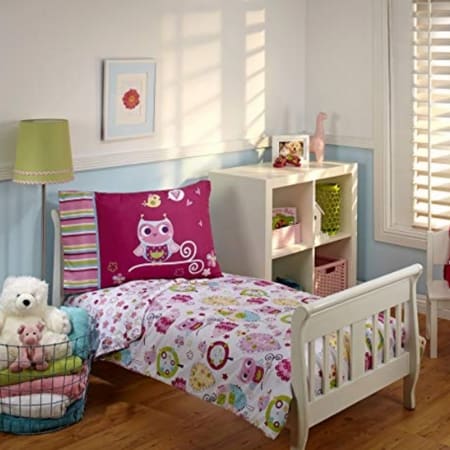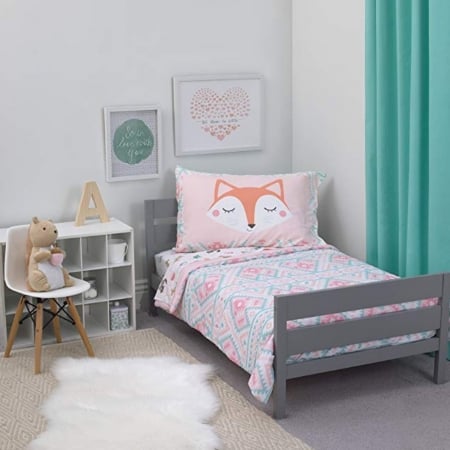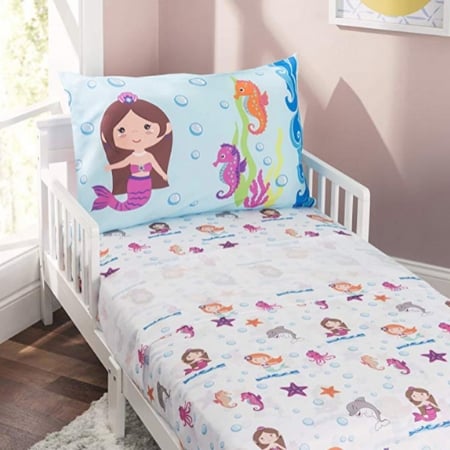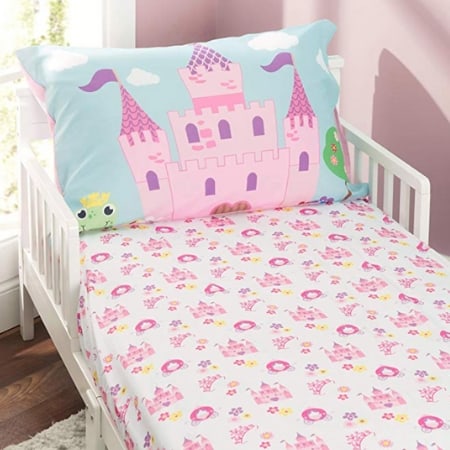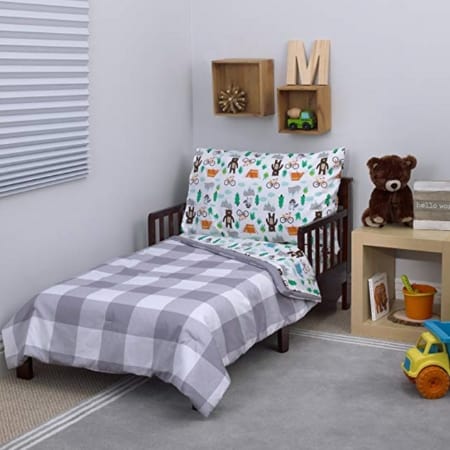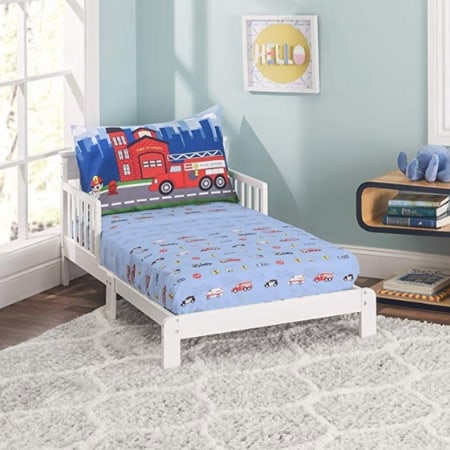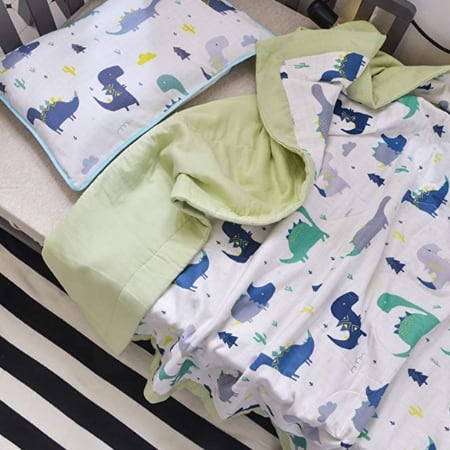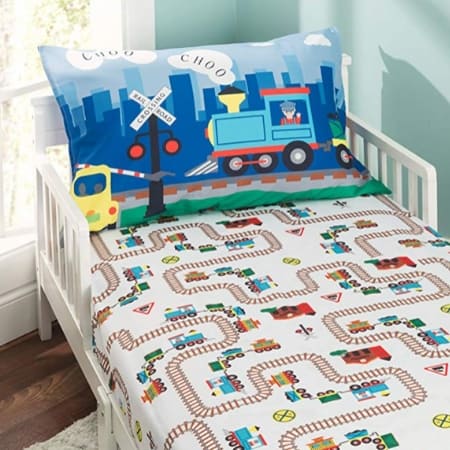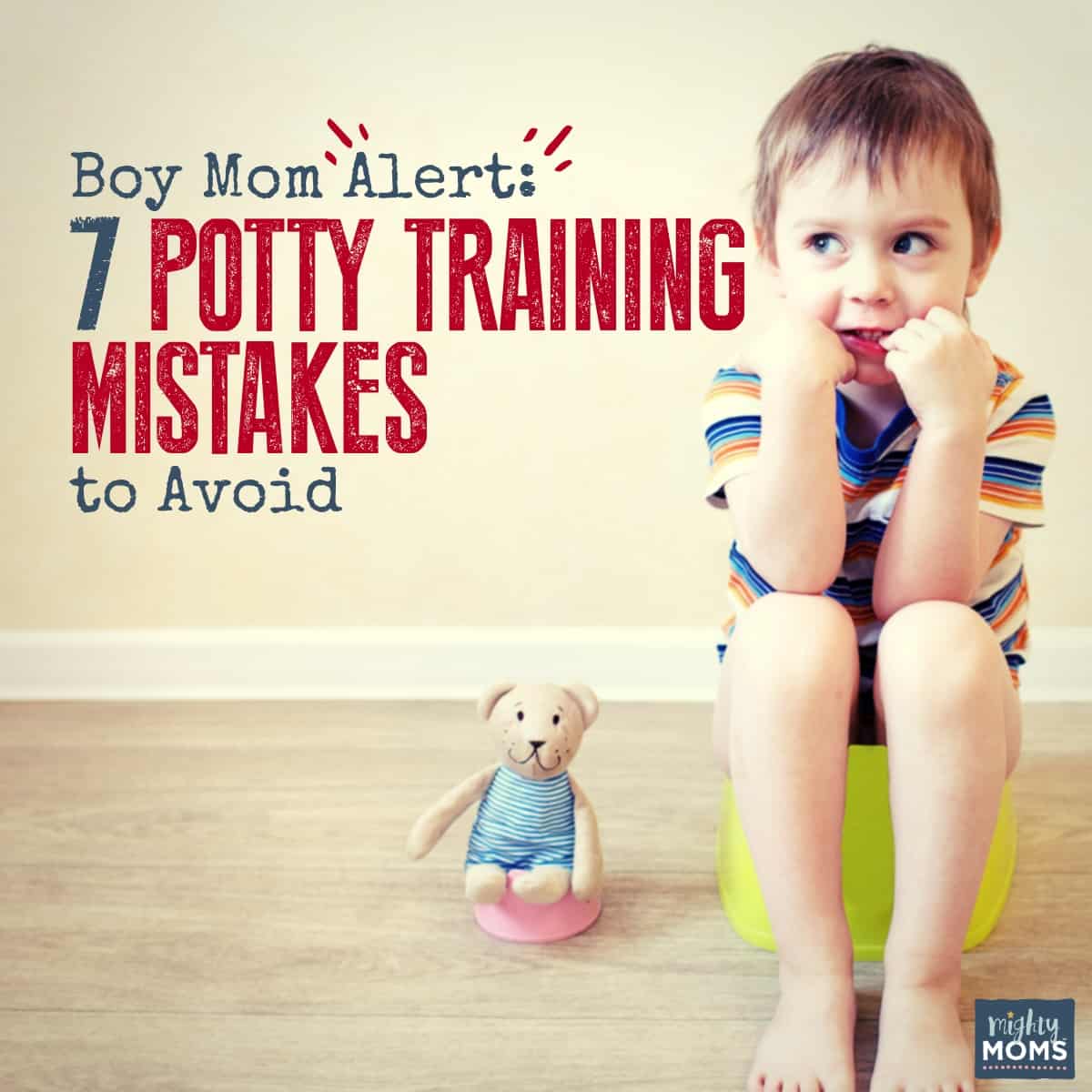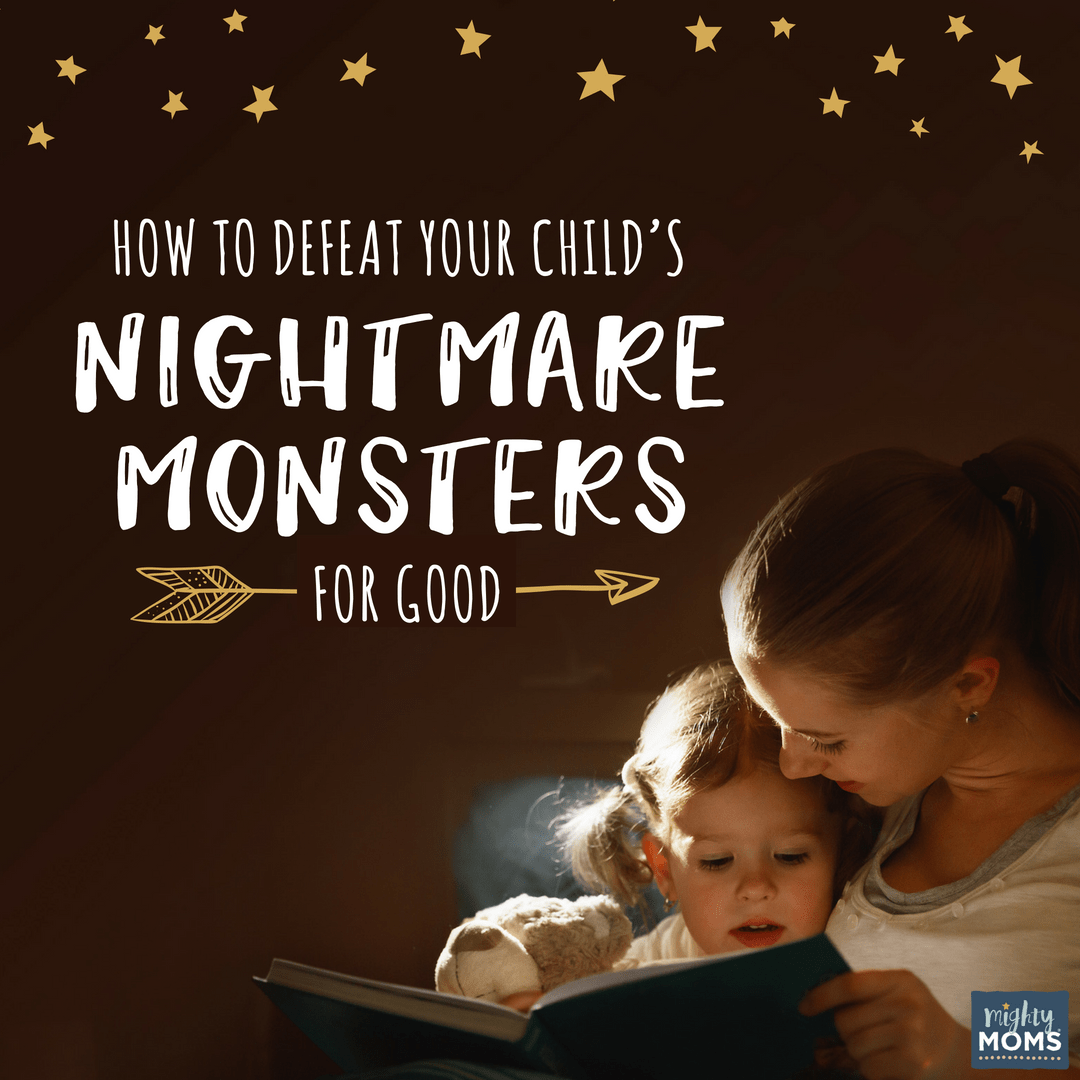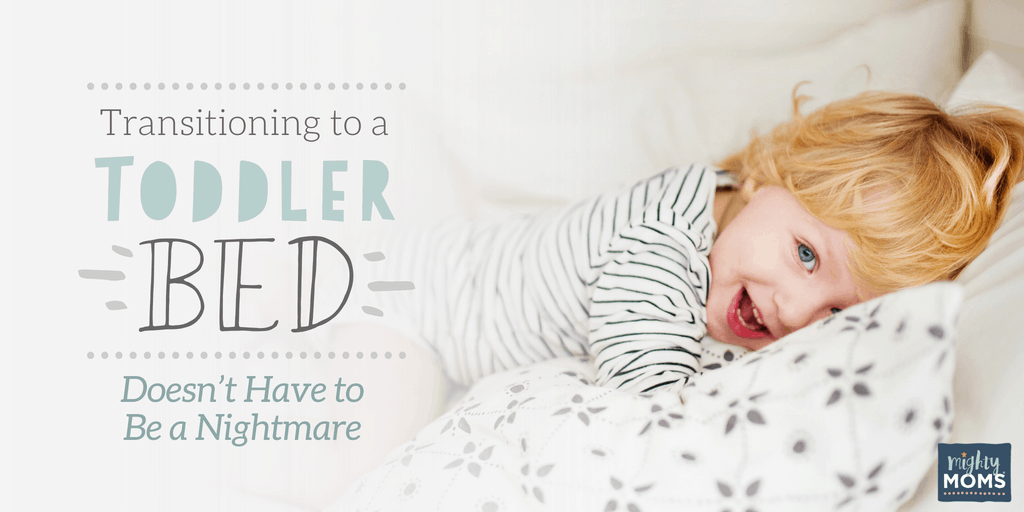
I have some somewhat shocking news: your child’s days in the crib are numbered. The time has come to move her to a toddler bed.
Yep. There it is. The nervous sweat dripping down your forehead. The labored, slightly panicked, breathing. All the good sleep you’ve enjoyed, as your child was contained in a slatted box of happiness, may be completely and utterly destroyed.
Are you going to go back to those nights of wake ups and early mornings?
NOT IF I CAN HELP IT.
Yes, it feels like you are approaching Mt. Doom, but I am here to guide you, like Gollum, beyond those daunting gates and onto the Secret Stairs. (Only I have more hair and a better complexion.) Let me polish off my Certified Gentle Sleep Coach badge and show you the way.
How to Make the Toddler Bed Transition Easier
- Make sure your toddler is actually ready to move to a toddler bed.
- Talk about the transition long before you actually move her.
- Have a new safety plan, now that your child is no longer crib-contained!
- Take it slow! Start with the nights first, then add naps later.
- Learn how to help your jack-in-the-box actually STAY in bed!
That’s the short version, of course, but you’re going to need more than a few broad statements. In order to preserve everyone’s good sleep through this shift, you’re going to need some specifics. Luckily for you, “sleep specifics” is what I do best!
Should You Use a Toddler Bed?
Or a Twin Bed?
Technically, a toddler bed uses a crib mattress instead of a twin mattress. Should you purchase a toddler bed frame? Here are some things to think about:
- Are you planning on having other children and can reuse the toddler bed for future siblings? If so, it may be worth it to either reuse the crib mattress (or buy a new one) and pick up a toddler bed frame. (I love this gray version or this delicate white design.)
- Do you have a very small space? Toddler beds are much smaller and lower to the ground.
- On the other hand, if you want to purchase something you can use for years to come and have the space, a twin bed may be a smarter long-term solution. Just make sure you have a bedside rail to prevent a nasty fall!
The good thing about using a toddler bed is that your child is already used to sleeping on that particular size of mattress. I know it may seem strange, but sometimes it can be difficult for young children, who are used to a smaller sleeping space, to sleep in an adult-sized twin bed.
Can you follow these steps with a twin bed? Absolutely. But you may want to take it a little slower than the time frame I suggest below.
The Right Time to Introduce a Toddler Bed
Before we start trudging up the Secret Stair towards toddler bed bliss, we need to stop and make sure you need to be on this journey in the first place.
The WORST thing you can do for your child is to push her towards a toddler bed when she’s not ready. Before she launches into the world of “non-contained sleeping,” she needs to show the signs that she’s an independent sleeper. Signs like…
- She can fall asleep without you. This means no patting, singing, rocking, or anything from you. You put her in the crib awake and she falls fast asleep.
- There is a consistent bedtime in place, between 7 and 8 pm.
- She sleeps at least 10.5 hours straight at night and takes around a 1 to 1.5 hour nap in the afternoon. (Yep, toddlers still need naps!)
If your child is not doing those things yet, hit the brakes and let me and Amy help you. It is possible to work on those things when she’s in a toddler bed, but it’s a lot harder. Once you lose the “containment” benefit a crib has to offer, sleep coaching gets a lot harder!
The Worst Mistake You Can Make…
Many parents make the mistake of transitioning to a toddler bed too early because they are hoping that sleeping in a big bed will somehow improve a bad sleeping situation.
THOSE. ARE. LIES. (Unfortunately.)
Bad habits will continue, regardless of sleeping location, because they are habits. The best thing you can do for your growing child is create a gentle sleep plan that can wean away those bad habits and replace them with good ones before the toddler bed gets introduced.
And the Number of the Counting Shall Be Three
When it comes to transitioning to a toddler bed, I would implore you remember the wisdom of Monty Python…
Thou shalt count to three. No more. No less. Three shalt be the number thou shalt count, and the number of the counting shall be three. Four shalt thou not count, nor either count thou two, excepting that thou then proceed to three. —Monty Python and the Holy Grail
Three is the magic age to make the toddler bed transition because three-year-olds are able to understand the bedtime rules about staying in the bed until falling asleep, and other good sleep manners. (If your child struggles to follow those rules, we can help you teach them.)
Okay, so let’s say your child has shown signs of having sleep independence and is three or over. How do you make the toddler bed transition so easy that she keeps sleeping like a champ, and you don’t find her sitting outside the fridge, chowing down on raw hot dogs at two in the morning?
Toddler Bed Transition Step #1:
Start Talking
Most kids don’t just jump straight into change. Most kids do better when they know what to expect and can anticipate what’s happening. (The same goes for potty training, btw.)
So start talkin’.
Circle a date on the calendar and talk about how this is a BIG day because she will officially be moving to a new big girl toddler bed! Talk about how Big Girls stay in their bed all night long, sleep with a pillow, and don’t leave their room until the Wake Up Light shines green.
Got Another Baby on the Way?
If you have a sibling on the way, start this toddler bed transition either several months before or after the arrival. Don’t try to cram this process in close to your due date. The last-minute rush could make your older child feel like she’s being “replaced” or shoved aside.
For siblings that are going to be closer than 3 years apart, use a newborn bassinet or playpen in your room until your older child is ready to tackle the toddler bed.
If you haven’t read Karen’s hilarious article, “Your Second Child: 7 Important Steps to Help Your OLD Baby Love Your NEW Baby,” I highly recommend it! Check it out here.
Toddler Bed Transition Step #2:
Get Shopping
Sure, you’ve planted seeds about the change coming, but your child is going to struggle with what “Big Girl Bed” actually means. It’s time to show her and watch the excitement really bloom.
Pick Out New Toddler Bedding
Choosing the toddler bedding is a great way to help your child understand exactly what’s happening, but it can also be fertile ground for an epic public meltdown.
As a toddler, she has opinions now and chances are, your opinions aren’t going to match. Unless you don’t care if she picks the neon, pink, orange, purple, and blue comforter of a beloved TV character that you honestly can’t stand, I would consider shopping online. Parental embarrassment averted!
Instead of browsing with your child on your lap, browse alone first, choosing 2-3 options you could actually live with, and then let your toddler choose one of those. Here are a few bedding sets I thought were really childishly fun, but stylishly gorgeous.


Set Up the Big Kid Room
Even if you are not actually moving your child into a new room, you will need to take a hard look around and make sure that the baby-friendly nursery is a toddler-friendly bedroom. Here are somethings to keep in mind:
- Set the scene for whimsical play and gentle repose with some carefully selected and inexpensive art prints on the walls.
- Create a reading area with a whimsical reading tent (like this dusty rose or this B&W teepee) and a low bookshelf that will entice your child’s curiosity by displaying the book covers, not just the spines.
- Make sure you have clever containers for toys and use them to teach your little one learn how to pick up and keep her room clean!
- Accidents happen, so make sure you have two waterproof mattress pads on hand. Layer them on the mattress, so when there’s an accident at 2am, you can whip off the old one and have the fresh cover in place and ready to go.
- Speaking of mattresses…this article can help you discover which mattress is best for your kids!
- Install a swinging baby gate to your toddler’s bedroom door. You don’t want your child wandering down to the kitchen and helping herself to the hot dogs at 2am!
- Double check that all the outlets have covers. I love these outlet covers because they address the very likely risk that you will remove a protector plug to charge your phone and never put it back.
- Have a video monitor high in a corner so you can keep your eagle eye on what’s happening in that room at all times. Bonus: This monitor is a best seller and has a two-way radio! (“Get back into bed, Lauren!”)
- Purchase a Wake-Up Clock that changes colors to teach when it’s time to get ready for bed at night and shout for you in the morning.
You’ve talked about the upcoming toddler bed transition and she is super stoked. You’ve got the bedding and have safety proofed the room. The day is fast approaching…so how do you actually make this adjustment without messing up everyone’s sleep?
Slowly.
You do it slowly.
Toddler Bed Transition Step #3:
Introduce Happy Playtime
The very first thing you’ll do is to help your child get used to the room itself. Trust me, it’s going to feel different on the other side of the crib bars, even if it’s the same room she’s been sleeping in for the past 3 years. Everyone will sleep better when the novelty wears off. A regular dose of “happy playtime” will make that happen faster.
Select a few “new” toys for her to explore in the room. You don’t have to spend a lot of money to make that happen! Trade with a friend, use a toy share service, or rotate your child’s toys in storage so they feel new.
If your child is already independently-minded, Happy Playtime will be easy. Plop her down with toys and books and walk out the door. She won’t even care you’re gone!
For more clingy children, this may take a bit longer. Remember, though, this independent play is an important developmental skill! Follow these suggestions a few times a day for as long as you feel it takes for her to adjust.
Easing into Independent Play
Here is a suggestion on how to get your child used to independent playtime. Feel free to extend this to be as long as it needs to be. The end goal, though, should be a quiet time of independent play once a day (in the morning if she’s still napping) of about 30-60 minutes a day.
- Days 1-2: Go in the room and play with together for 10-15 minutes.
- Days 3-4: Enter the room together, but let her play on her own while you sit to the side and check email, Facebook, read a book, etc., for 15-20 minutes.
- Days 5-6: Enter the room together, letting her play on her own for a few minutes before quietly leaving the room. Don’t make eye contact or talk when you step out. Leave the door open, but keep the gate closed. If she starts to cry, return right away and try again later.
- Days 7-8: Put her in the room, giving her some toys and books to play with. Let her know that you’ll be right outside the door, and you can see her on the video, but you’d like her to play alone for a little while. There will be a special reward for her if she can stay in her room and play quietly until you return!
Set your timer for 30 minutes at first, so she gets used to the idea that YOU will come and get her. She doesn’t have stand at the gate and scream, because you forgot or wanted to finish that Fixer Upper episode. (Don’t worry, eventually you will extend that quiet time!)
The Power of the Snack Fairy (Pirate?)
After my toddlers/preschoolers were done with their quiet time, I would always have a visit from the Snack Fairy (Snack Pirate?) who left little surprises as a reward for staying in their room until I came to get them. (If you need healthy snack ideas, try some of these.)
I would insist that I left them a delicious snack of tree branches and rocks, but that DARN SNACK FAIRY turned it into pretzel sticks and raisins! Then I’d pretend to be all upset, and say we should try to trap that fairy, like my leprechaun traps.
What I started as a fun little game quickly turned into an exciting obsession for my kids. They couldn’t wait to see what items that Snack Fairy would transform next! (Dog poop = chocolate pudding, rotten fish = goldfish, etc. Anything gross got a giggle!)
Toddler Bed Transition Step #4:
Start at Night
Once your toddler is used to spending time outside the crib, it’s time to officially move into the bed. Always start this transition for nighttime sleep, and let your child continue to nap in the crib until she’s successfully slept in the toddler bed all night long with no wake ups. (Which may be just a day or two, who knows?)
If she’s potty trained, decide ahead of time if she can visit the bathroom alone, or needs your supervision. Either way, it’s helpful to limit any fluids an hour before bedtime.
The Big Kid Bedtime Manners
Go through your normal bedtime routine and discuss Big Kid Bedtime Manners:
- Stay in your bed until the green light shines on her Wake Up Clock.
- Lay still and close your eyes.
- Use your quiet voice.
I would also select a sticker chart or a small reward in the morning for showing good Big Kid Bedtime Manners the night before. This could be as simple as a special sticker on her shirt, to having bonus electronic time after breakfast.
Stay in the Room…Temporarily
Put your child into the toddler bed and settle down somewhere in the room for the first night. Make sure she knows this is temporary! You can occasionally pat her or sing a few songs to help get her sleepy, but don’t do anything consistently or you’ll develop a sleep crutch.
A sleep crutch is anything that a child requires from a parent in order to fall asleep and is often the root cause of sleeping struggles. Fortunately, it’s also something Amy and I (with our years of experience) can teach you how to fix!
Do NOT crawl into bed with her! (Repeat that last sentence several times!)
You can absolutely sit on the bed, if she needs you closer, but resist the temptation to lay down with her. That’s a habit that can be difficult to break and will lead you to sleeping in her bed at 2am in order to help her fall back asleep.
After several evenings of sitting near the bed until she falls asleep (which may take a while at first, because she’s excited), move your chair to the doorway and do the same for 2-3 days. After that she should be good to sleep on her own. (If not, we’ll show you what to do next.)
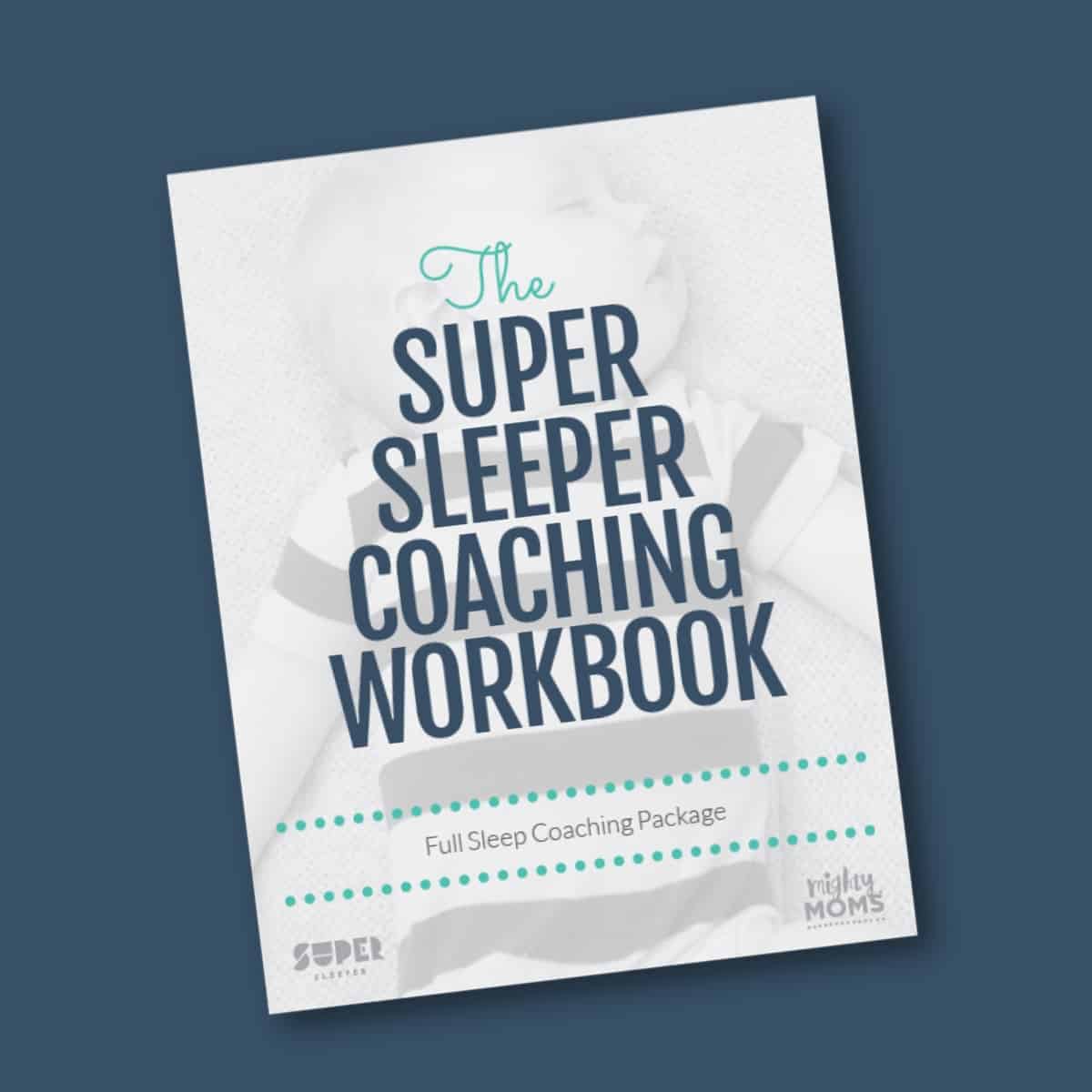
Help Your Toddler Sleep Better
We can help transform your King Crankypants into a Sultan of Sleep!
Learn HowProtected by Stripe — PayPal Verified — PCI Compliant
Toddler Bed Transition Step #5:
Add Those Naps
I’ll be honest with you. Napping in a toddler bed is super hard. The temptation to reach out and grab the dinosaurs and toys on the shelf across the room can make settling down to a nap difficult. (If not impossible!)
That said, most three-year-old children still need at least an hour or so of daytime sleep to avoid getting overtired at night, so don’t ditch those naps! An overtired child will wake more at night and rise earlier in the morning (before 6am). I know that seems bizarre, but after six years of sleep coaching, I can testify that it’s totally true.
Here are a few pointers to keep in mind when it comes to adding naps in a toddler bed:
- Make the room as dark as possible. The fewer exciting things your child can see, the more likely she will nod off.
- Don’t start working on naps until she’s sleeping through the night in the bed.
- As you move towards the nap, start moving slower and talking softer.
- Read a book together in the room to help her brain slow down and get ready for sleep.
- Have her change into soft “napping pants” to help trigger the brain into making the sleepy hormone melatonin.
- Let her lay on the bed while you gently scratch her back and sing a few soft songs.
Remember, if you just left a rock concert, would you be able to instantly settle down to sleep? Your child is the same way. In her world, she’s been in an exciting rock concert all morning! She needs your help to get her brain settled down for a nap.
If your child is struggling to nap in the new bed, my fellow Certified Gentle Sleep Coach Amy Estell and I would love to help! Sign up for a Napping Session. We’ll teach you several gentle nap coaching methods to give her the good sleep her brain desperately needs.
How to Keep Your Jack-in-the-Box to Stay in Bed
You’ve put all the preemptive measures in place. You know your child and have worked to put consistent bedtime routines in place each night.
And yet, you still might have a kid who just won’t stay in bed.
So, take what you know about your child and what kinds of correction they respond best to and dig into your toolkit of options to help you correct this behavior. Here are a few suggestions to start with.
A Bedtime Pass
Kid are smart and learn pretty fast that one of the ways they can stay out of bed is by asking for all the stuff available to them.
- I need a drink!
- I have to go to the bathroom!
- My pajamas are too itchy!
- My blanket isn’t cold enough!
Enter the Bedtime Pass. Your kid gets one free out. And if they squander their bedtime pass on something they didn’t really need? Tough luck.
This option comes with its own book, but if you’re like me you could just use the construction paper and laminating sheets you keep around the house for special occasions. ????
Positive Reinforcement
Maybe your child would be motivated to stay in bed if you put some preemptive reinforcements in place.
Sticker charts work well in this instance. What would motivate your child to stay in bed for three days straight?
A trip for some special frozen yogurt? A toy from the dollar store? A special Trolls sponsored dance party in the living room?
Once you start to see progress, here, extend your length of days until, eventually, you have helped form a habit and you can remove the reinforcement altogether.
Make Use of a Consequence
Would your child respond better in this instance if a loss of something was at stake?
- Maybe the open door is contingent upon your child remaining in bed.
- Maybe the morning show is only watched if your child shows you she can stay in bed the night before.
- Maybe the water bottle in bed with her is taken away if she makes a choice to get out of bed.
If consequences are an effective tool for your child in this case, just make sure they cater to their specific needs and make sense. For example, don’t take away a security blanket as a consequence if that is also a means by which she is soothed and calmed.
The Silent Treatment
If your child is attention-seeking, all he wants is for you to engage with him when he gets out of bed over and over again.
So don’t.
- Meet him at the door.
- Silently walk him back to bed.
- Leave.
- Repeat.
You won’t see results immediately, but hopefully your child will realize that getting out of bed isn’t getting him anything he actually wants and will just stay in bed instead.
Put Those Toddler Bed
Nightmares to Rest
Moving your child to a toddler bed is a major parenting milestone! The containment crib is going away and your child is going to be free to the world.
Terrifying.
Take heart, young adventurer. This is something you can do successfully.
Don’t just cross your fingers, though, and hope it goes well. Do it on purpose.
Use the plan I’ve provided and you won’t end up lost, wandering the dangerous tunnels of Cirith Ungol, letting Shelob poison all your precious sleep! Let’s put those post-toddler-bed nightmares to rest.
There’s new hope on the horizon!

Help Your Toddler Sleep Better
We can help transform your King Crankypants into a Sultan of Sleep!
Learn HowProtected by Stripe — PayPal Verified — PCI Compliant
Have You Read These Yet?
We ♥ honesty! This post contains affiliate links that provide extra money for our mutual coffee habits addictions. Click here to learn more. As an Amazon Associate I earn from qualifying purchases.
